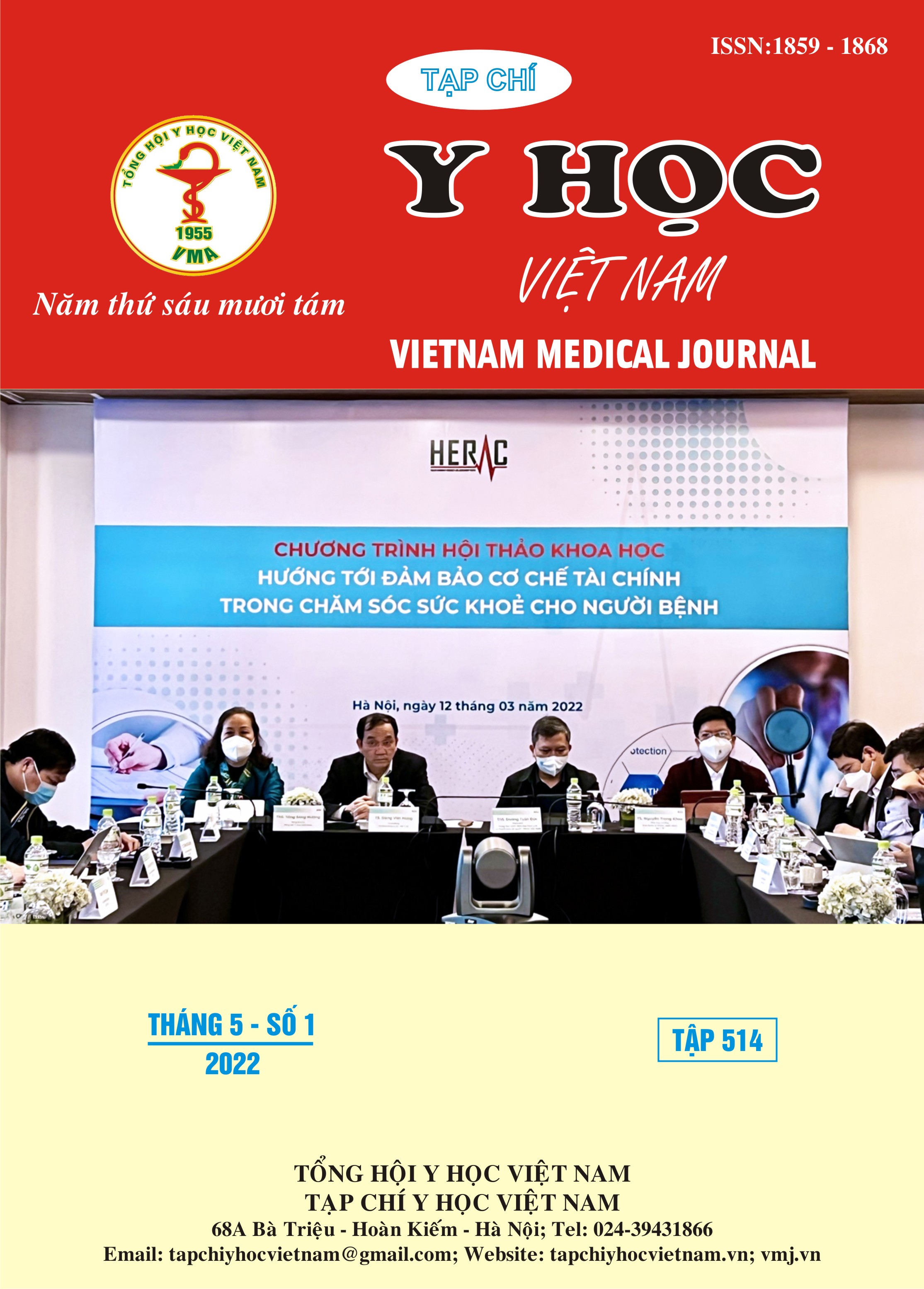TO EVALUATE THE EFFECTIVENESS OF PAIN RELIEF AFTER SHOULDER JOINT SURGERY BYINTERSCALENE BRACHIAL PLEXUS BLOCK
Main Article Content
Abstract
Applying pain relief methods after shoulder surgery has great value in clinical practice. All analgesia techniques have advantages and also disadvantages. We conduct research to compare the effectiveness of pain relief after shoulder joint surgery byinterscalene brachial plexus block under ultrasound guidance with single shot or continuous infusion. Prospective, randomized clinical trial study will be conducted at Viet Duc Hospital from 3 to 8/2021. 61 patients, divided into 2 groups. Results: anthropometric indices, ASA, type of surgery between the 2 groups did not have any difference. The average resting VAS score of both groups was below 4 at all the time points of the study, the VAS score of the continuous infusion group (group I) was lower than that of the single shot group (group II) at the time points of the study from T16 to T48, difference was statistically significant with p < 0,05. The average moving VAS score of the group I was lower than in group II from the time point T12 to T72, the difference was statistically significant with p < 0,05. Conclusion: VAS scores at rest or movement were lower in the continuous infusion group than in the single injection group, the difference was statistically significant from the 12th hour after surgery. Some side effects were low and no difference between the 2 groups.
Article Details
Keywords
brachial plexus block, ultrasound, analgesia, ropivacain
References
2. Richman JM, L.S., Courpas G, et al., Does continuous peripheral nerve block provide superior pain control to opioids? A meta-analysis. Anesth Analg, 2006: p. 102(1):248-257.
3. Davis JJ, S.J., Greis PE, Burks RT, Tashjian RZ. and doi:10.1016/j.jclinane.2008.08.022, Interscalene block for postoperative analgesia using only ultrasound guidance: the outcome in 200 patients. J Clin Anesth, 2009: p. 21(4):272-277.
4. Sabesan VJ, S.R., Petersen-Fitts GR, et al. , A prospective randomized controlled trial to identify the optimal postoperative pain management in shoulder arthroplasty: liposomal bupivacaine versus continuous interscalene catheter.J Shoulder Elbow Surg, 2017: p. 26(10): 1810-1817.
5. Le LT, Loland VJ, Mariano ER, et al. Effects of Local Anesthetic Concentration and Dose on Continuous Interscalene Nerve Blocks: A Dual-Center, Randomized, Observer-Masked, Controlled Study. Reg Anesth Pain Med. 2008;33(6):518-525.
6. Shin SW, Byeon GJ, Yoon JU, et al. Effective analgesia with ultrasound-guided interscalene brachial plexus block for postoperative pain control after arthroscopic rotator cuff repair. J Anesth. 2014;28(1):64-69.
7. Fredrickson MJ, Leightley P, Wong A, Chaddock M, Abeysekera A, Frampton C. An analysis of 1505 consecutive patients receiving continuous interscalene analgesia at home: a multicentre prospective safety study. Anaesthesia. 2016;71(4):373-379.


